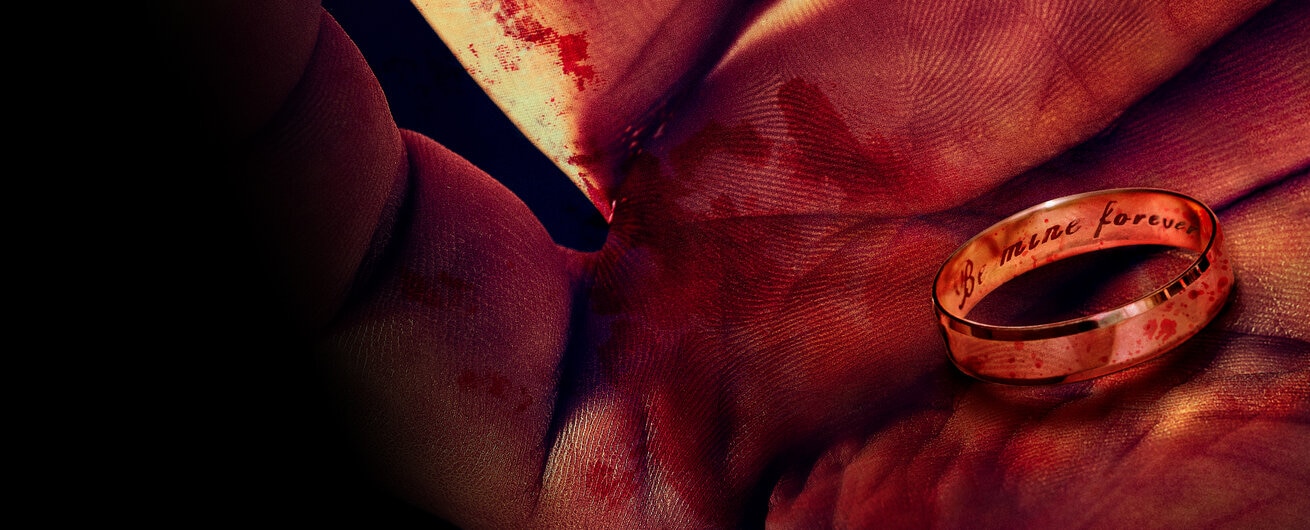Create a free profile to get unlimited access to exclusive videos, breaking news, sweepstakes, and more!
‘Eyelids Had Been Removed’: Serial Killer Strangled Women, Then Mutilated Them
Baton Rouge detectives track a serial strangler of women who got “satisfaction” from mutilating his victims.

In January 1999, the body of 29-year-old Katherine Hall was found near a remote construction site in Baton Rouge, Louisiana. She was nude with ligature marks around her neck.
Hall had been cut all over her body. She had lacerations on her legs and puncture wounds on her torso.
In addition ‘the eyelids had been removed,” investigator Todd Morris, LA. Attorney General Office, told “Mark of a Serial Killer,” airing Saturdays at 8/7c on Oxygen.
The lack of blood near the body indicated that the cuts had been made after the victim was dead. A distance from where her body was recovered, police collected Hall’s ID card, her jacket, and a large plastic zip tie.
A hair found in Hall’s mouth during the autopsy didn’t match her own and was believed to belong to her killer. DNA analysis of that hair told detectives that they were looking for a white man.
But with no real leads to go on, the case stalled for several years.
In October 2003, the body of 45-year-old Johnnie Mae Williams, who was identified following a missing persons report by a family member, was found in a sparsely populated, wooded area of the city.
Like Hall, Williams had ligature marks on her neck and significant cuttings to her back and legs, which, as shown by the absence of blood, had been made post-mortem.
Investigators were shocked to find more cuttings done to her.
“Her hands were severed very cleanly from her wrists,” said Det. Bryan White, East Baton Rouge Sheriff’s Office.
Despite an extensive search, the hands were not found.
As they worked the Williams case, investigators considered the similarities to Hall’s murder four years earlier: “We knew that we had a very sick individual operating in Baton Rouge,” said White.
During Williams’ autopsy, a hair not matching the victim’s was found at the end of her severed arm. DNA analysis revealed that it matched the hair from the white male found on Hall.
But detectives didn’t have a suspect and they were running out of leads.
Four months later, the body of 43-year-old Donna Bennett Johnston was found in the woods on the outskirts of town.
Like the other two victims, Johnston had distinct ligature marks around her throat and significant cuttings on her body. One of her arms had been severed. Her nipples had been removed.
The coroner determined that Johnston’s cause of death was asphyxiation, which aligned with the deep ligature marks around her neck.
In addition to fingernail scrapings from Johnston’s body, investigators made a cast of a tire track left near where this third victim was recovered.
A task force of local and state law enforcement officers was formed to investigate the three linked unsolved homicides that each exhibited the killer’s telltale mark.
“It seems like the actual kill is not as sexy to him as what happens after,” forensic psychologist Joni Johnston told producers. “He’s attracted to and seeking out body parts of these dead corpses, which is beyond rare.”
DNA analysis of genetic material under Johnston’s fingernails matched the hair found on Hall and Williams. The same suspect was directly connected to three murder cases.
At this point, the investigation led authorities to a man who admitted to knowing one of the victims. When a search of the individual’s home turned up a purse that belonged to the victim of yet another unsolved homicide, another red flag was raised.
But the man and his son both voluntarily gave DNA samples, which cleared them as suspects and had investigators starting from scratch. Urgency was escalating to get this killer off the streets of Baton Rouge.
With no new leads or suspects, investigators turned back to the tire tread evidence collected at one of the crime scenes. An auto dealer identified the tread as Goodyear Aquatred 3.
Detectives determined that about 100 people in the Baton Rouge area had bought that particular tire. They interviewed everyone who had purchased one and asked them to consent to a DNA swab.
On April 24, 2008, they went to the residence of 41-year-old Sean Vincent Gillis. During the interview with law enforcement, Gillis acknowledged that he knew about the murder cases through the news.
Gillis told officials that he had driven in the area where Johnston’s body was found because he needed to relieve himself. He also admitted that he was friends with Williams and that she “had been in my vehicle several times.”
He consented to having a DNA swab taken and to coming to the police headquarters for further questioning that might help detectives come up with fresh leads.
At the same time Gillis’ DNA was rushed to the Louisiana State Police Crime Lab, where analysis would take at least four hours, authorities said. Before the DNA analysis was completed, police didn’t have cause to arrest Gillis so he was brought back to his house.
Investigators surveilled the residence, and later got confirmation that Gillis’ DNA matched the unknown suspect. In the early morning hours of April 29, 2004, a SWAT team arrested Gillis.
During the videotaped interview, Gillis referred to himself as a “monster.” Then the floodgates opened. He revealed how he drove around looking for victims and used a zip tie as a noose. He said his cutting fantasies began when he was in his mid-20s.
Asked about Hall, Gillis’ shocking videotaped response was: “I wanted to see what her butt looked like sliced open, honestly.”
“What he was telling us that he had done just seemed unreal,” said Jeff Methvin, special agent, FBI.
“The excitement, the enjoyment, the sexual satisfaction for him came after he had mutilated the body and taken what he wanted,” said Joni Johnston. “Then he had all this time to just experiment.”
Gillis was indicted for the murders of Catherine Hall, Johnnie Mae Williams and Donna Bennett Johnston. His trial began July 21, 2008 and lasted three days.
Gillis confessed to eight murders but parts of his admission were deemed inadmissible in court.
He was ultimately convicted of the murders of Donna Bennett Johnston and another woman named Joyce Williams. He was sentenced to life in prison.
“Sean Vincent Gillis preyed on women that he thought wouldn't be missed … but somebody out there always loves these people,” Donna Bennett Johnston’s son Justin Bennett told producers.
To learn more about the case and others like it, watch “Mark of a Serial Killer,” airing Saturdays at 8/7c on Oxygen.






























